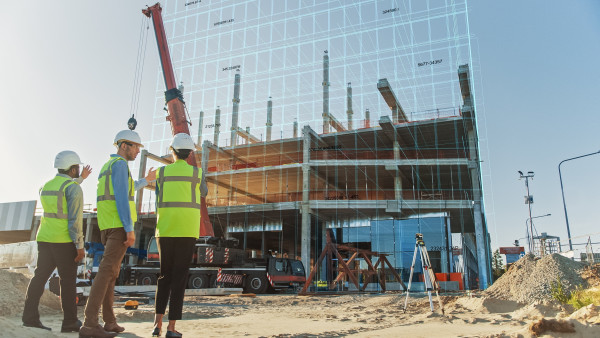Public comment now open on TS 1170.5, to help lead the way for new practices in seismic engineering
The first draft of the hotly anticipated technical specification 1170.5 Structural design actions - Part 5: Earthquake actions - New Zealand is ready for public comment and we encourage all interested parties to have your say.

Developed to address the outcomes of the NSHM
In October 2022 GNS Science published the updated National Seismic Hazard Model (NSHM). The NSHM, calculates the likelihood and strength of earthquake shaking that may occur in different parts of Aotearoa New Zealand over specified time periods. It is used to improve our resilience and manage risks to safety, security and the economy from seismic events.
TS 1170.5 looks to expand on learnings gained since the publication of both the updated NSHM and the existing building code compliant standard NZS 1170.5:2004. The current standard, sponsored for free access through Building Performance (the building regulator), is used by structural engineers to assess and calculate the forces and deformations from earthquakes acting on structures such as buildings and other structures. It helps engineers design structures that comply with the New Zealand Building Code’s earthquake resistance requirements.
NZS 1170.5:2004 remains the referenced standard for compliance with the New Zealand Building Code. However, TS 1170.5 aims to provide a means for engineers to voluntarily test, and put into practice, new technical specifications within the context of the updated NSHM. Technical specifications developed through Standards New Zealand follow international good practice in developing consensus-agreed industry-led guidance, and here a technical specification provides a quicker solution in a rapidly changing environment, allowing for ‘road testing’ before potential integration in a subsequent development of a standard.
Helping towards earthquake resilience
Committee chair Rob Jury is Chief Engineer - Structures with international engineering firm BECA and leads the group of subject matter experts on the TS 1170.5 development committee. ‘The committee has had good representation by the technical societies, by material groups including concrete and timber, and by government departments,’ says Rob.
‘I congratulate the committee members who have worked very well, quickly coming up to speed with a lot of technical information. They have deliberated, combined their many decades of experience and perspectives, and developed this first draft.
‘Users of the standard might be wondering what’s different? The key differences are the design seismic loads which have increased for many areas across the motu, plus the change in the way in which ground conditions are allowed for, and the specific requirement for consideration of geotechnical matters in the design of a building. A revamped Section 8 Parts and Components includes the latest thinking on derivation of design actions and introduction of limits for applied actions on the foundations for some buildings.’
Offering an alternative solution
David Gittings, Manager, Building Performance and Engineering with Building Performance who commissioned the development of the technical specification, explains, ‘Once the public comment has closed, any subsequent version that is finalised and published will be able to be used by designers on a voluntary basis as one way of demonstrating compliance with the performance-based Building Code, through an Alternative Solution. Some building owners or developers may choose to use the technical specification as a business decision for new buildings to future-proof their building assets, improve marketability and to demonstrate that their buildings exceed minimum building code requirements. NZS 1170.5:2004 remains the cited standard in the Verification Method and can continue to be used to show compliance with the Building Code’
“It’s important to note that the technical specification does not change the requirements of the earthquake-prone building (EPB) system. Our advice is that all seismic assessments, including voluntary seismic assessments, follow the same approach as for the national earthquake-prone building system and use the current NZS 1170.5:2004.’
Have your say on the draft
To ensure your perspective is considered, have your say via our online consultation hub by 14 March 2024. Once public comment closes the committee will consider and discuss all feedback towards developing the final version.
Please note there are two separate draft documents for TS 1170.5:
- The main TS 1170.5 Structural Design Actions – Part 5: Earthquake actions draft
- The associated TS 1170.5 Structural Design Actions – Part 5: Earthquake Actions – Commentary
The purpose of the commentary is to provide background and additional information to the various provisions listed within the main TS 1170.5 draft, and references are provided for further reading and are given at the end of each section of the commentary.
Have your say on TS 1170.5 at Standards New Zealand’s consultation hub(external link)
